- Home
- Succulents
- Euphorbia
- Euphorbia Multiprolifera
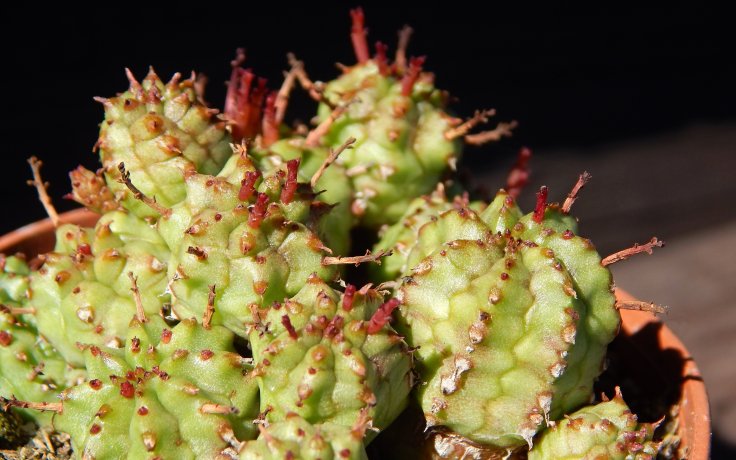
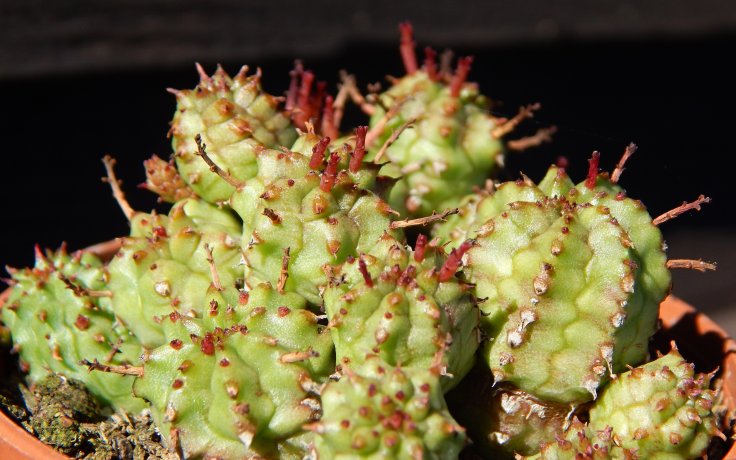
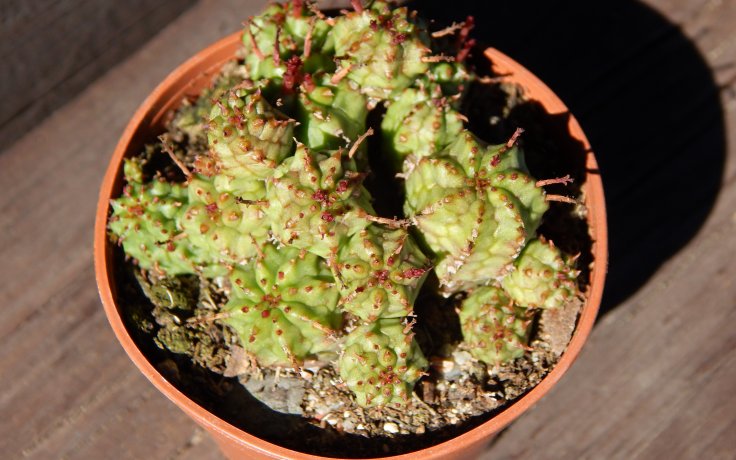
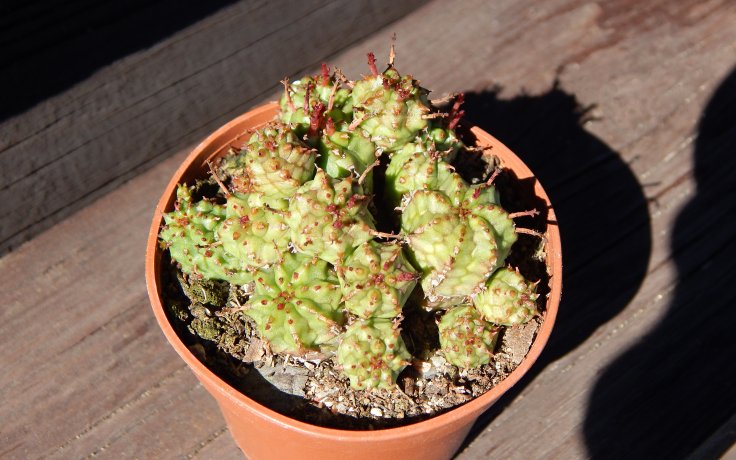
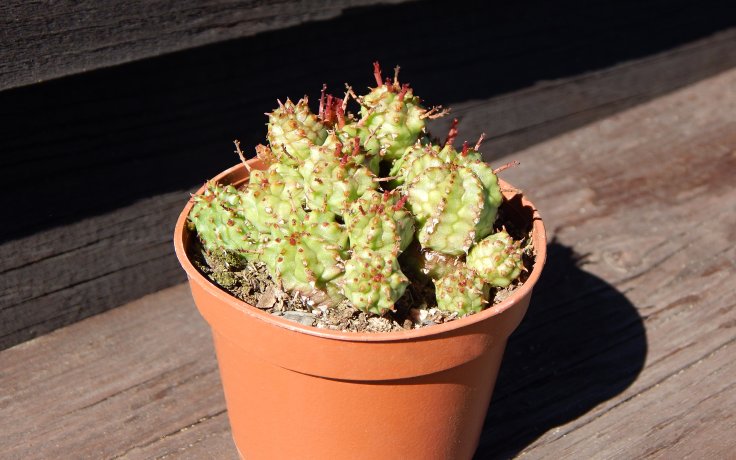
Euphorbia Multiprolifera
Plant likes partial shade, can tolerate sunny sites.
Always water a few days after the substrate has dried out. In winter, limit watering. Water less rather than more.
It can tolerate -3,9 °C in the short term. However, the plant is not hardy.
This cactus-like plant lives up to its name and rhizomes prolifically. Multiprolifera can be loosely translated as "abundantly branching".
Euphorbia Multiprolifera, also known as Euphorbia submammillaris f. pfersdorfii, is a succulent plant that does not deny its epithet Multiprolifera, i.e. abundantly branching.
The green stems contrast with the red thorns, which are soft and flexible at first but later harden and resemble those of cacti. In sunlight the plant turns yellow. The tiny stems continuously grow into clumps and reach a height of up to 5 cm.
Euphorbia Multiprolifera is unlikely to flower.
This succulent grows very deep in the ground. Therefore, if you want to achieve a taller growth, you can pull the root (stem) slightly above the substrate to extend the body of the plant. If we are interested, we can also fertilise it for better growth. For example, a fertiliser mixture for cacti and succulents is ideal. However, fertilizing is not necessary. This plant is abnormally drought-resistant.
When injured, it produces a whitish latex that is slightly toxic. Caution is therefore required when handling the plant. Above all, the milk should not get into the eyes, and after handling the plant it is necessary to wash your hands, on which the milk leaves sticky stains on contact. It is easy to grow and drought resistant, but requires caution because of the latex that oozes out when the plant's body is disturbed. Nevertheless, it is a popular succulent, mainly due to its cactus-like appearance, its tree-like shape or its abundant branching.